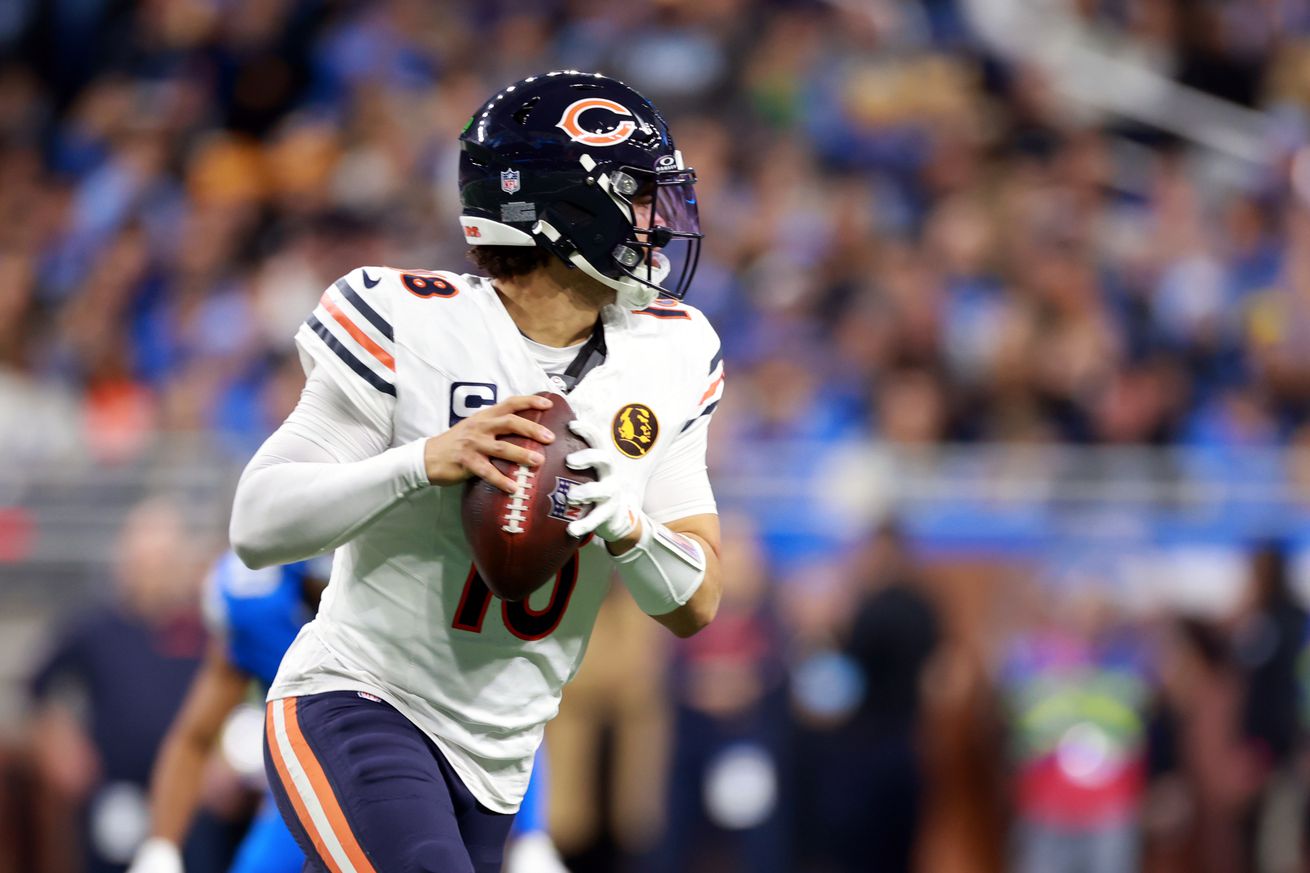
QB wins? Tackles? Red Zone Conversion %? Interceptions Thrown? Which NFL stat is the least useful in judging a player’s ability?
We’re in the heart of the NFL offseason, finding the Chicago Bears smack dab in the middle of the lull between OTAs and training camp, what better time to spark some discussions about topics we rarely touch on during the regular season?
That brings us to a fun question worth exploring:
What’s the most overrated stat in the NFL?
For a long time now, I’ve had a personal gripe with one particular stat: the NFL Passer Rating. In fact, [shameless plug warning] I spent four months this offseason trying to develop a better way to quantify a quarterback’s impact, something I call the True Passer Rating. (Feel free to ask me about it anytime.) Now, back to our regularly scheduled off-season fluff piece!
Why the NFL Passer Rating?
Well, let’s start with a question: What does the NFL Passer Rating do?
To try and keep it simple, the NFL Passer Rating is a traditional formula used to measure a quarterback’s passing efficiency. It combines four key passing statistics: completion percentage, yards per attempt, touchdown percentage, and interception percentage into a single number on a scale from 0 to 158.3, where higher is better.
Its birth began in 1971 when NFL Commissioner Pete Rozelle (yes, that Pete Rozelle)…

… petitioned the NFL’s statistical committee to create a new way to crown a passing leader. It was officially adopted as the league standard in grading QB efficiency in 1973. Officially giving the league a way to crown its best/most efficient Quarterback.
But, why don’t I like it?
I have a few reasons.
1) It hasn’t aged well.
Simply put, the NFL Passer Rating offers an outdated lens for evaluating quarterback success. According to Pro Football Reference, the league’s average passer rating has climbed from 64.9 in 1973 (when Roger Staubach led the NFL with a 94.6 rating) to 92.3 in 2024, with Lamar Jackson topping the list at a stellar 119.6. To put that in perspective, Staubach’s league-leading rating in 1973 would have ranked just 15th in 2024, right behind Russell Wilson. As quarterback skill has evolved and league rules have increasingly favored the passing game, it’s become harder and harder to make fair comparisons across eras using this metric alone.
2) It doesn’t take into account key components of being a passer.
Here’s a simple thought experiment:
Quarterback A throws one pass: a 70-yard touchdown. However, 65 of those yards come after the catch, with the Wide Receiver turning a 5-yard slant into a long score.
Quarterback B also throws a 70-yard touchdown, but in this case, only 20 yards come after the catch. The QB hit his receiver perfectly in stride on a go route.
Are these two throws equal? According to the NFL Passer Rating, they result in the same 158.3 “perfect” score. But fails to take into consideration the relative difficulty of each throw, namely the depth of target on the throw (commonly known as average depth of target, or aDOT in today’s NFL.) So while the box score will tell you both QBs were amazing on that play, there’s more to it than meets the eye.
It also ignores two major components of quarterback play: ball security (specifically fumbles) and sacks. Modern NFL analytics show that taking just two sacks can be as damaging, or even more so, to a team’s Expected Points Added (EPA) as throwing an interception. And omitting fumbles lost by the quarterback feels like cherry-picking, conveniently overlooking a critical weakness for QBs who struggle with ball security.
3) It has arbitrary limiting factors to it.
Namely, the minimum score of 0.0 and the maximum score of 158.3 (these being limited by additional limiting factors within how each component of the rating is calculated.) Secret Base did a fantastic video series covering this in more depth, and I would suggest checking it out if you want to do a deeper dive: Correcting the NFL’s passer rating lie.
4) It doesn’t even really do its job well.
Bear with me. This is the first example that comes to mind when thinking about the flaws in the NFL Passer Rating.
Bears vs. 49ers, Week 14 of the 2024 season. The Bears came into the game clearly overmatched, just ten days removed from a hard-fought Thanksgiving Day loss to the Detroit Lions. The 49ers jumped out to an early lead, scoring 24 points in the first half on their way to a 38-13 blowout. Chicago didn’t reach the end zone until there were about six minutes left in the third quarter.
Now, looking at the box score, Caleb Williams only threw for 134 yards. But he also had 2 touchdowns, no interceptions, and just 6 incompletions. On paper, that resulted in a 116.9 passer rating, the third highest of his career.
What that number doesn’t reflect is the seven sacks he took, the one fumble he lost, and the difficulty he had pushing the ball downfield, with an average depth of target of just 6.8 yards. Just an overall miserable game for not only Caleb Williams but the offensive unit as a whole.
To offer a different perspective, the passer rating I developed gave Caleb Williams a score of 41.9 for that game. In my opinion, that is a much more accurate reflection of how poorly he played.
For a brief comparison: In Week 6, Williams completed nearly 80% of his passes for 226 yards, 4 TDs, 1 INT and just 3 sacks, and his rating ended up being 124.4 in a dominant 35-16 Bears win, merely 7.5 points higher! (A game which my system gives him a 153.3 score.)
And for those reasons, I believe the current NFL Passer Rating is overrated and not a significant or accurate way to measure a quarterback’s performance.
But that raises the question: in your opinion, which NFL stat is the most overrated? Let us know in the comments!
Gary Baugher Jr. is a rookie contributor to WCG, bringing football insight backed by over 16 years of experience in organized football and more than 30 years as a passionate fan of the game. You can follow him on Twitter at @iamcogs.